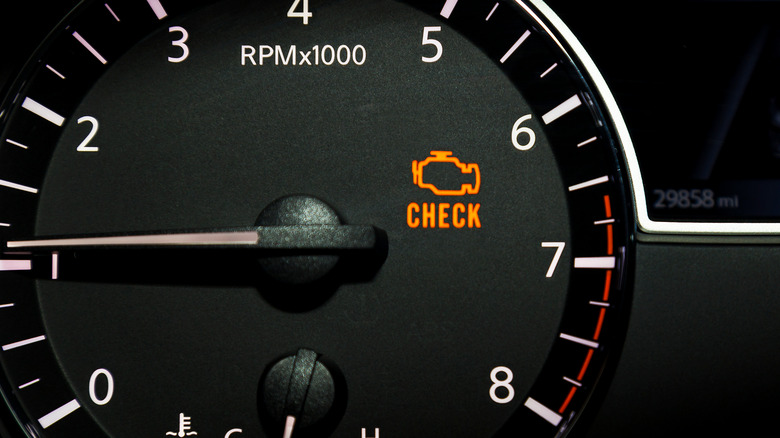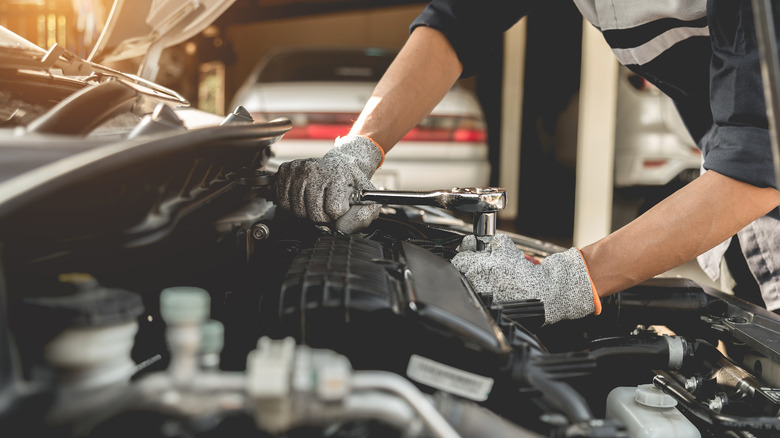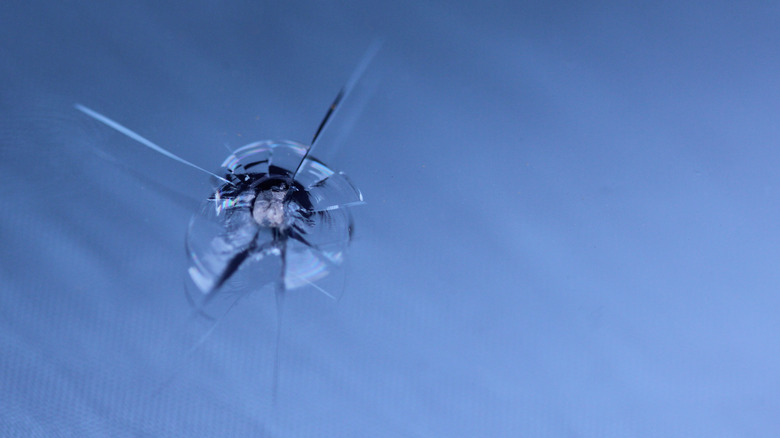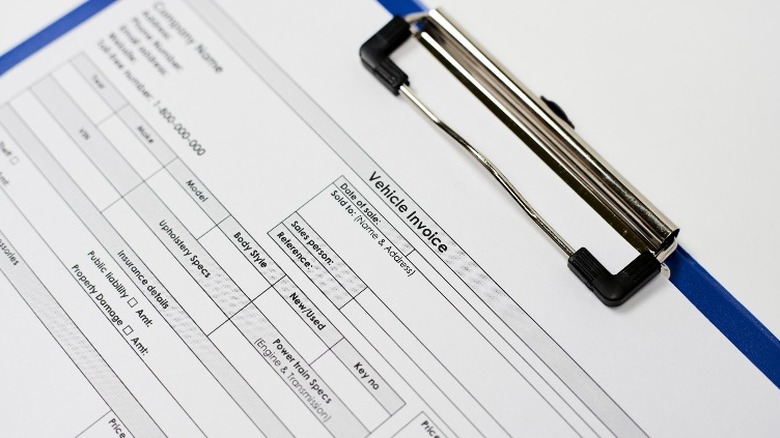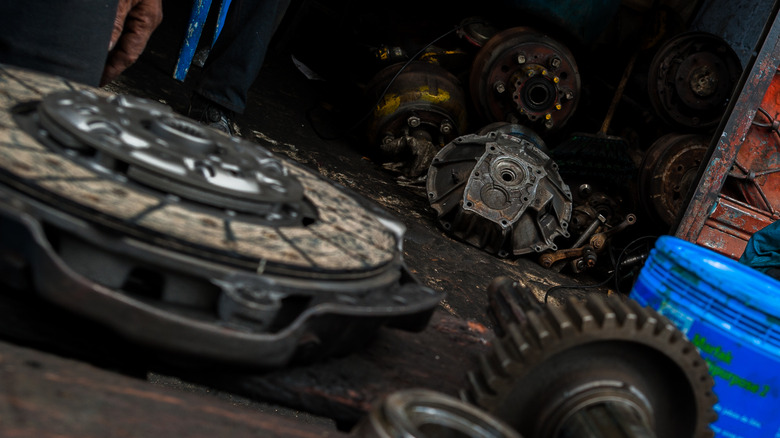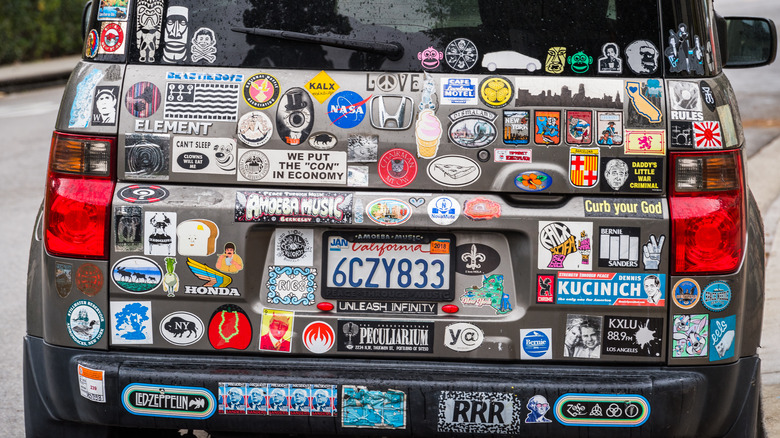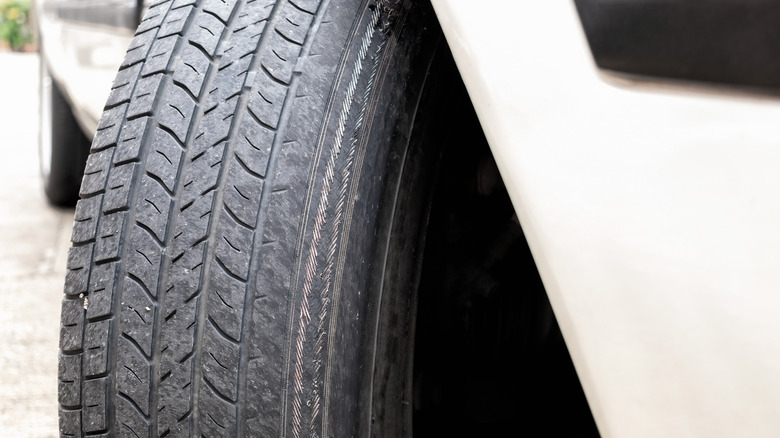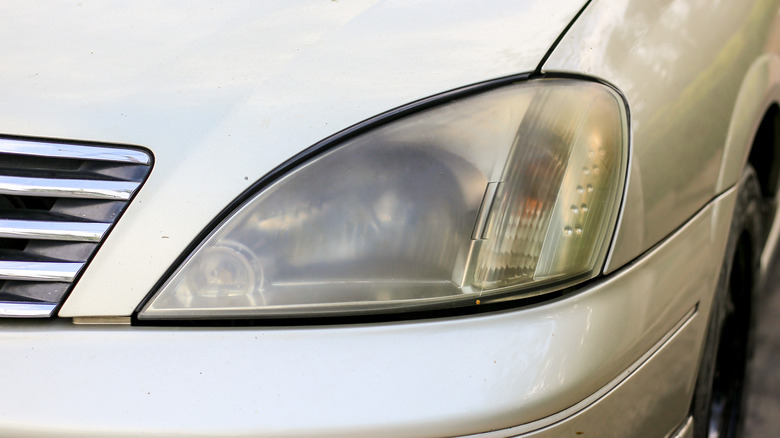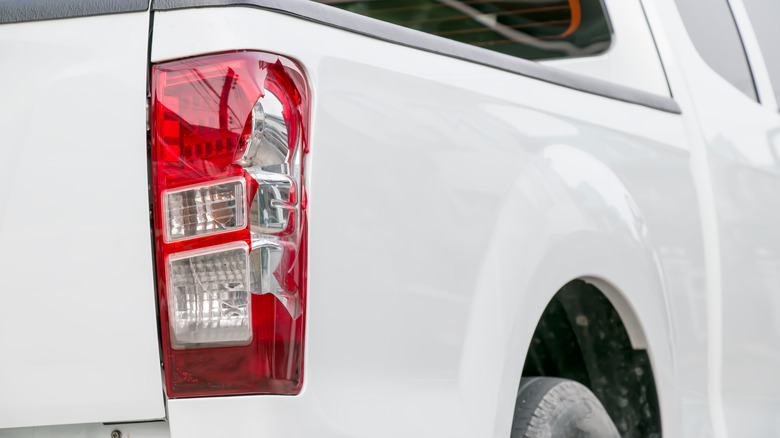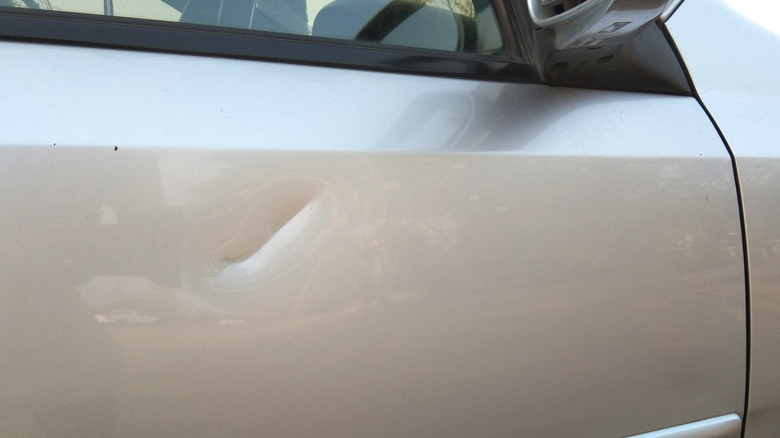Tiny Mistakes That Are Making Your Car Worthless
Automobiles are one of the most valuable assets most people will own. The unfortunate part of owning a vehicle is that, unlike real estate, it will — with some exceptions — depreciate. From the time it's driven off the lot, the depreciation clock is ticking for a new car. Most car owners will make efforts to a varying degree to keep the value from dropping too quickly, while others probably think little of it so long as the car gets them where they need to go.
As a professionally trained auto tech, I have seen firsthand the incredible damage people can unknowingly inflict on their rides. I understand the importance of regular maintenance and the enormous benefits of keeping up with it. Having spent a fair amount of time working with used car dealers, I have seen many instances of people who have undercut their possible trade value for simply overlooking easy-to-repair issues. Still, spending money on oil changes and other maintenance items is far less gratifying than spending on new electronics or clothes, but the maintenance costs are an investment in protecting a highly valuable asset. Also, with the complexity of automobiles having risen to a point that car owners are capable of doing few of their own repairs and maintenance, the chances of having problems have also risen drastically. Therefore, while I recognize the possibility of pushing the limits of acceptable hyperbole, here are some tiny mistakes that could be making your car worthless.
Ignoring warning lights
Manufacturers have added all sorts of warning lights and messages over the years that many consumers find more of a slight inconvenience than an indication something terrible is about to happen. This could likely be traced to the fact that a check engine light (CEL), included in the gauge cluster to signal problems with the engine, often illuminates due to problems that are not an immediate risk of failure. This is often due to problems with emissions that do not hamper the performance of the engine. The car may run fine for years with the CEL light on, causing no immediate mechanical failure but possibly polluting over an acceptable level.
All environmental concerns aside, there is a good reason not to ignore the CEL. While you may have had the light investigated with the conclusion that no imminent danger is present with continued driving, other problems may arise that do require immediate attention. These other problems can end up being costly failures. To avoid a costly cascade of engine troubles, it is highly recommended you have all problems addressed to avoid driving with the dreaded CEL light on. Additional caution is to never drive with the CEL flashing. Mechanic Base says this means you have a misfire and raw fuel is passing through your engine onto the catalytic converter, which will melt, and that will definitely be a costly repair.
Deferred maintenance
Deferred maintenance is the all-too-common practice of putting off those repairs that should be done today. Leaving some issues too long can cause other issues if left to fester. In a 2015 study, AAA discovered that 35 percent of Americans delayed or ignored service recommendations from either their mechanic or the factory recommendations. This lackadaisical attitude ultimately costs car owners more money at each successive visit to the shop to the tune of one hundred dollars. Plus, it's more important to spend money on maintenance than on aesthetic upgrades that don't benefit the performance of your vehicle.
Putting off your car's alignment needs causes tires to wear, and that is a big issue when it comes time to sell. If a savvy buyer sees uneven tire wear, they may suspect larger problems in the car, even if it drives straight at the time. Nobody likes surprises and a well-kept car gives people peace of mind and more money in your pocket.
Leaving windshield cracks
Having a crack in your windshield presents safety issues. However, value is the matter at handhere. It is maddening to be running down the highway and have gravel off of a truck fly out and hit your car, causing a chip or a crack. The danger of leaving a chip or crack is that they can spread. The vibrations and flexing of the car while driving add stress to the glass, causing small problems to grow. A small crack from a rock can spread across a windshield in a relatively short time, necessitating replacement. Windshields vary in price and run from a couple of hundred dollars to thousands a the upper end. Furthermore, the newest cars are increasingly having accessories built into the windshield, making replacements more expensive.
According to NAPA auto parts, small cracks out of the way do not significantly damage the structure of the glass, and many products are offered to facilitate easy repairs that can be done yourself for little cost. Most window and glass dealers also offer repair services that cost far less than replacement. When a crack spreads across the windshield or spreads out like a spider web, then it is time to look for a replacement. It is likely many people simply do not know small cracks and chips can be repaired or how inexpensive they can be. Making sure the windshield is free of problems will make it quicker to sell for a better price.
Keeping a dirty car
Most people like keeping their car clean and plenty of money is spent on products and services every year just for automobile washes. But can keeping a dirty car devalue it? In some ways, yes. For those who own new or nearly new cars, the impetus for keeping it clean is strong, as those monthly payments reinforce how much of an investment a new car is, and keeping it clean is a natural part of protecting your investment. It is when cars start to age a bit and the newness wears off that some of those good habits can fall to the wayside. Don't let that happen to you.
Dirty cars can lead to a devaluation for a few reasons. According to Way.com, allowing dirt to remain on the paint contributes to the degradation of the clearcoat and, when it deteriorates too much, the paint can be compromised. The dirt that remains on the car is abrasive and will accumulate tiny scratches and abrasions over time. Also, salt on the roads will degrade the paint and contribute directly to rust forming if it is not washed away regularly. It is also important to keep the windows clean and clear just for safety's sake. The final consideration is the resale value. A car with dirty, faded paint with spots of rust and corrosion will sell for less than the gleaming clean car next to it. It is just a good idea to wash your car regularly.
Customization
The idea that spending money to add accessories and functionality to a car could lower its value may seem foreign, but there is some truth to it. A lot of it has to do with perception and another bit of it has to do with the actual utility of customizations.
When you add something to your car, you put your own stamp on it and make it more to your personal liking. That is all well and good, but if you ever intend to sell this car, your choices may not be appealing to a prospective buyer and that can be a problem. This can reduce how much someone is willing to pay. Furthermore, an abundance of performance mods can scare away buyers who fear the car has been driven hard and may not last long. Autoblog warns against some mods that chase away the dollars, including body kits, loud exhaust, and garish wheels. Most average buyers want a car the way it left the factory and if that describes your car, it will attract the best price.
Inadequate service records
No car is perfect. They are built by humans and humans are not perfect. Therefore, a trip to the mechanic is inevitable, no matter what you drive. It is of paramount importance to keep these records as they can be a huge asset when the time comes to sell your car.
Buyers of used cars know they are taking on some degree of risk. They are paying less for a used car and that risk is part of the deal. To help mitigate the risk, or the impression of risk to buyers, having detailed service records for as long as you have owned your car can go a long way. Not only does it show that you have taken care of your car over the duration of ownership, but it can also highlight those parts that have been replaced and should be good to go for some time after buying it (via AutoTrader). The knowledge that an expensive repair has already been performed can give some peace of mind to prospective buyers and allow you to get a better price than someone who has no records, making their car more of a used car roulette wheel. Gambling can be a fun pastime, but it is better left to the casinos and away from the used car lot.
Using discount mechanics
Nobody likes to pay for car repairs. They are inconvenient and, most of all, costly for modern cars. $30 batteries are a thing of the past, along with the days of $25 alternators. It seems impossible to leave a shop for less than a hundred dollars with $500 seeming to be the norm anymore. That is exactly why taking your car to your buddy's ex-girlfriend's second cousin's garage in the country can sound like a good way to save money, but that idea can backfire on you in a big, expensive way.
Car repairs are becoming more costly because the parts and materials used in manufacturing are more high-tech than ever and many of them use more expensive raw materials than were used way back when. Cars are also exponentially more complex and technicians require much more training, with the top mechanics all having graduated from a tech school before stepping foot in any service center. When you find the bargain basement mechanic, you could be opening yourself up to needless expenses down the line.
Stickers
Stickers are a fun and easy way to personalize your car and sometimes make a statement. They can convey your feelings on a particular topic or show your support for whatever you are a fan of. There is nothing wrong with adding a bit of personal flair to your car, but there is a point at which it can devalue it. Because of the extremely personal nature of whatever you put on the car, few buyers will want to see them on the car they are buying. It can lower prospective offers. Reader's Digest notes that dealers will remove them, but not before lowering a trade-in offer first.
The most important rule to follow when adding stickers is to only apply them to glass. Stickers are easily removed from glass with razor blades and if you are selling a car, it is imperative to remove them. Things get a bit trickier when stickers are applied to paint. While they can be removed, it is much more difficult. Furthermore, if the paint is weak or has any spots where it is already peeling, the sticker removal can exasperate the problem. Stickers also prevent paint from fading and can leave a spot behind on older cars that have suffered from some paint fade. To ensure the highest value, just remember only to apply your stickers to the windows and you will have no problems when the time comes to sell.
Mismatched or worn tires
For safety's sake, keeping good rubber on all four corners of your car is a good idea. Bad tires can seriously affect handling. But having good tires also helps with its resale value. Tires — whether traditional or run-flats — are expensive and savvy buyers will look at the tires to consider if it will be an expense they must take on after buying your car.
According to Auto Trader, car owners often have mismatched tires for budgetary reasons, only changing them one or two at a time to save money. This can lead to tires with differing rates of wear. They also recommend staying away from cars without a fully matched set, as it can signify a car owner who has shortchanged the upkeep on the car, either due to lack of funds or simple neglect. You will draw higher offers by keeping the tires uniform and with plenty of tread.
Faded headlights
The introduction of the plastic headlight assembly with removal bulb gave car designers a fantastic tool in creating new shapes and looks for our cars that removed the limitations of sealed beam headlight bulbs. Since then, cars' headlights have come in a dizzying array of shapes and styles. But this did have one huge drawback for buyers of used cars — foggy headlamps. The plastic used in the assemblies is a durable material but it becomes damaged over time. After hundreds or thousands of hours running down the highway constantly being pelted by sediment and bugs, the surface will deteriorate. It makes the lights ugly and diminishes their effectiveness.
Hazy lights are ugly and may turn off prospective buyers. If two identical cars sit for sale and one has clear lights, it will sell first. However, there are solutions. Consumer Reports offers opinions on five different products for restoring your own headlights for $20 or less. It only takes an hour or two and the results can be surprising. For those who wish to have professionals take care of things, most shops offer a service to restore headlights for less than $200. Unless your car is very old and toward the end of its life, it should be money well spent.
Cracked taillights
In a similar fashion to having hazy headlights, cracked taillights are a huge turnoff for prospective buyers. Unfortunately, taillight assemblies can be rather costly. It is not uncommon for some car owners to have to shell out $300 or more to replace one single light assembly. Still, it is a good idea to keep them looking new.
It all comes down to appearances and no matter how good you keep up your vehicle, a broken taillight sends signals of disrepair. One might think that if you are willing to drive around with a cracked lens on your rear lights, what other issue might you be letting slide? While the money spent to replace a light will not necessarily be recouped upon selling your car, it can usher in a quick sale.
How Stuff Works lists several things to do to ready a car for sale and replacing cracked lights is chief among them. Furthermore, it is suggested that a cracked taillight could be a safety issue due to faulty brake lights resulting from damage to the assembly. Whether you plan to sell or not, it is a good idea to keep those lights looking great.
Unrepaired damage
This one should seem obvious, but perusing local auto listings you will see a surprising number of sellers that do not heed this advice. Damaged cars are unappealing. Nobody likes to have a car with major blemishes but body shops can be very expensive and that is the reason people will live with an imperfect car, so long as it can get to work. Minor scratches, dents, and dings all contribute to your car being worth less than one in perfect condition.
While Four Wheel Trends reports that frame damage can devalue your car by as much as 30%, the little things that won't affect safety or driving can add up. Potential buyers will be turned off by small imperfections, but the good news is that they can often be repaired without major work. Paintless dent repair, or PDR, is a great remedy for minor dings and dents. Motor Verso explains that PDR uses a few methods to return body panels back to normal such that the paint is not damaged and there are no sharp edges or torn metal around the dent. The ability to repair a dent without filling, sanding, and repainting the panel saves a lot of money. Typical PDR repair run from about $50 to $200. Making these small repairs can pay for themselves and make your car quicker and easier to sell.

